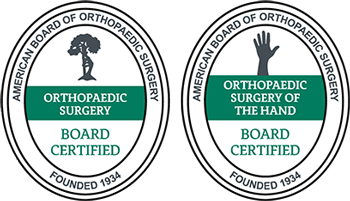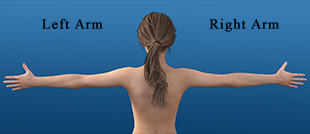Why Does My Wrist Hurt When I Twist It?

right human hand by Mathias Reding is licensed with Unsplash License
Wrist injuries are fairly common, especially if you’re active. Whether you’re working out, playing a game of baseball, or simply carrying a heavy child around for hours, your wrist is exposed to the potential for injury. Here’s what you need to know about wrist conditions so you can follow the best course of action if your wrist hurts when you twist it.
Contents
Understanding Wrist Pain: Causes and Concerns
Wrist pain can occur due to a number of different conditions, ranging from traumatic injuries to wrist strain to diseases. The wrist contains 20 ligaments that connect the metacarpal bones of the hand to the eight carpal bones at the end of the ulna and the radius of the forearm. Wrist pain is a common problem, especially among those who engage in physically demanding occupations or sports. In this population, wrist pain affects 10% of people in the short term and nearly a quarter of people in the medium term.
Identifying Symptoms of Wrist Issues
If you’re experiencing severe or persistent pain when you twist your wrist in an ordinary manner, you should contact your healthcare provider to further evaluate the issue. In addition to pain and discomfort, wrist problems are often accompanied by:
- Swelling
- Redness
- Stiffness in the wrist
- Numbness or tingling of the wrist, hand, or fingers
- Loss of muscle mass in the wrist, hand, or fingers
You should seek emergency medical attention if you’re bleeding profusely, you can’t move your wrist, hand, or fingers, or a part of your wrist, hand, or fingers is noticeably misshapen.
Common Wrist Conditions
Wrist pain can occur for a wide variety of reasons. It’s helpful to understand some of the most common causes of wrist pain so you can respond appropriately.
Wrist Sprain
A wrist sprain occurs when the ligaments in the wrist are stretched or torn. This is often caused by a fall, trauma, or sports injury. While the sprain itself is often minor, this type of injury can come with other complications, such as bone fractures, tendon injuries, muscle strain, or nerve damage. Wrist sprains are categorized as:
- Grade 1: The ligament is stretched but not torn, with mild pain and swelling at the wrist.
- Grade 2: The ligament is partially torn, and the wrist is painful both in use and often at rest.
- Grade 3: The ligament is completely torn or ruptured, causing severe wrist pain and hampered movement.
Wrist Tendonitis
Wrist tendonitis is inflammation of the tendons in the wrist. Also known as “mommy’s wrist,” this condition is common among individuals who hold or care for a baby for several hours every day. It’s usually caused by the strain of repetitive motions. This irritates the tendon sheath and causes it to swell around the tendons. Tendonitis usually heals with conservative treatment methods.
Carpal Tunnel Syndrome
Carpal tunnel syndrome occurs when the median nerve is compressed where it passes through the carpal tunnel in your wrist. The median nerve controls the three middle fingers and thumb and compromises feeling and function in this area when it’s compressed. Without treatment, carpal tunnel syndrome is progressive and worsens over time. Though this is a wrist condition, it impacts the fingers significantly, hindering movement, causing pain and numbness, and resulting in swelling.
Wrist Tenosynovitis
Wrist tenosynovitis is also known as De Quervain’s tenosynovitis. This condition occurs when the tendons around your thumb become swollen and inflamed. As the tendons enlarge, it becomes more difficult for them to pass through the surrounding sheath, which makes movement difficult and painful. Wrist tenosynovitis is caused by repetitive motions involving the thumb and wrist.
Arthritis in the Wrist
Arthritis is a progressive disease that wears away the cartilage in your wrist joint. Wrist arthritis can occur at different locations in the wrist, including the distal radioulnar joint, the midcarpal joint, and the radiocarpal joint. There are various types of arthritis as well, including osteoarthritis, rheumatoid arthritis, post-traumatic arthritis, psoriatic arthritis, and septic arthritis. This condition causes stiffness, swelling, weakness, and a reduced range of motion at the wrist.
Fractures
A wrist fracture is a broken bone in the wrist. Ten bones make up the forearm and wrist, and an injury to any one of them can cause a wrist fracture. The large forearm bone called the radius, is the most common bone impacted by a wrist fracture. Distal radius fractures account for a sixth of all broken bones in the United States. If the fracture breaks the skin, it’s known as an open fracture and requires immediate emergency attention.
Wrist fractures always require medical treatment. In some cases, your doctor can perform a closed reduction where they straighten and splint the bones nonsurgically. If the bones can’t be repositioned in this manner, you’ll need an open reduction surgery.
Treatment Options for Wrist Pain Relief
For many wrist injuries, the first course of treatment is the RICE method, which stands for rest, ice, compression, and elevation. If the injury is minor, this may be adequate. If the pain persists, you have severe swelling and bruising, the wrist is misshapen, or you heard a loud pop or crack at the time of the injury, you should seek medical attention.
Surgical intervention is sometimes used to treat wrist pain. This may involve stitching a ruptured tendon back together, widening the carpal tunnel sheath, or even replacing the wrist joint.
Prevention Strategies for Avoiding Wrist Pain
Reduce your risk of a wrist injury by taking preventive measures:
- Warm up before engaging in sports or other physical activities.
- Use protective equipment such as wrist guards.
- Rest your wrist if it starts to feel uncomfortable.
- Avoid repetitive movements during chores or work tasks, and change your motions when you can.
- Cool down at the end of physical activities.
Visit The Hand and Wrist Institute
For an expert diagnosis and treatment plan, contact The Hand and Wrist Institute if you’re experiencing wrist pain. Our specialized practice focuses exclusively on hand, wrist, and arm injuries, so we have an in-depth knowledge of the factors that impact these conditions and the most effective treatment methods. Contact us to schedule an appointment.

























